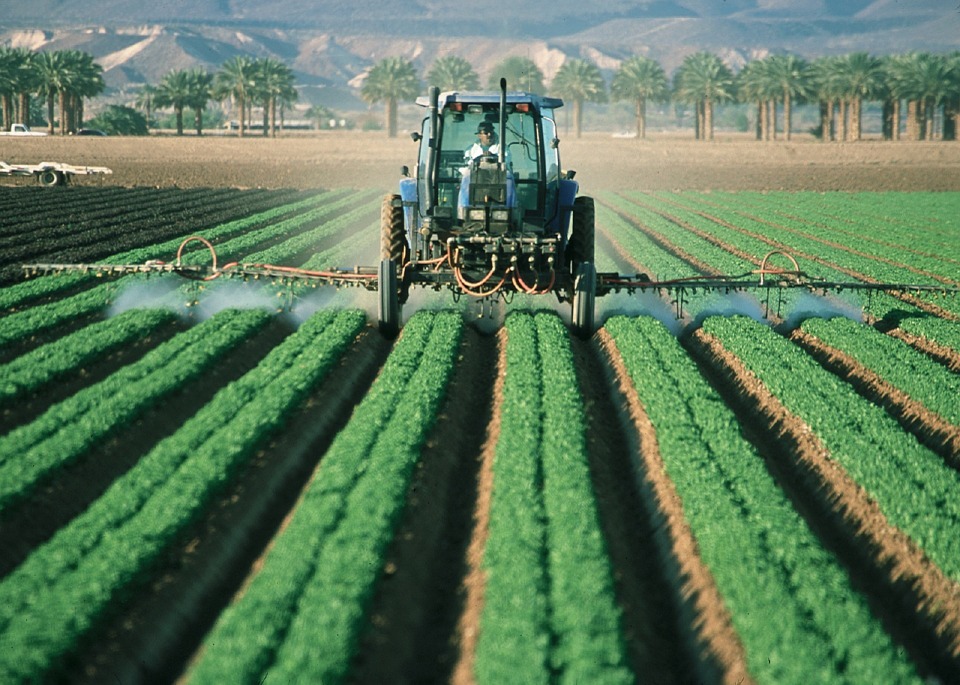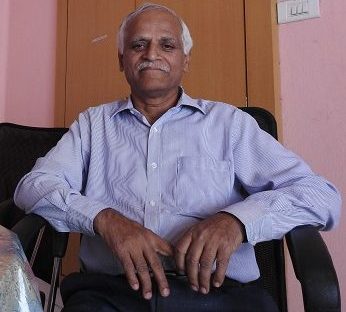
This ex-soldier battles all odds to discover, promote rural innovations

P Ganesham, a retired Brigadier, is on a unique mission to spot and nurture rural innovators and help them patent their ideas.
The septuagenarian ex-serviceman is engaged in a battle of a different kind; fighting the odds that the rural innovators face in getting recognition for their devices and traditional practices.
He travels to villages, identifies the rural innovators, fine-tunes their ideas and presents them to the world.
‘Palle Srujana’ (Rural Creativity), a Hyderabad-based voluntary organisation set up by the former soldier and other like-minded individuals, is engaged in scouting rural talent, aiding and promoting creativity at the grassroot level in the two Telugu states of Telangana and Andhra Pradesh.
So far, they have identified more than 280 innovators across the two states, besides documenting close to 2,500 traditional practices.
Among these, 13 innovators have won the Rashtrapati Award, and two have won the Padma Shri. The organisation has also helped 26 innovators patent their devices.
“The innovators have collectively generated a turnover of close to ₹6 crore last year, benefiting more than ₹5 lakh families,” the retired Brigadier said in an interview to The Federal.
The patented products range from agricultural implements, roti-making machines and solar water filters to multi-purpose beds for differently-abled people.
The idea of “Palle Srujana” is that rural innovators leverage knowledge derived from the nature for their livelihood. There is abundant creativity in villages to find solutions which are simple, affordable, sustainable and user-friendly.
“It has been a great learning experience for me. In the last 14 years that I have been visiting the villages, I have always amazed at the level of talent and innovative spirit that exists in our rural areas,” he says.

The volunteers of his organisation identify the grassroot innovations, covering farming, low cost power generation, construction, weaving and other aspects that make rural life comfortable, and connect them to the entrepreneurs in India and abroad to take them to the next level of manufacturing. A group of “Palle Srujana” volunteers, comprising 20 to 40 people, undertake what they call “Shodh Yatra” that would see them criss-crossing the villages and interacting with locals to identify rural innovators.
“For us, this is a pilgrimage to the forgotten temples of knowledge,” says Brig Ganesham (76) with a sense of pride.
Success stories
Ch Mallesham, a school drop-out from a poor weaver family in Telangana’s Nalgonda district who figured in the Forbe’s list of seven most powerful rural Indian entrepreneurs, is among the innovators whose unique work has been brought to light by “Palle Srujuna” volunteers.
He is the inventor of “Laxmi Asu Machine” which automates the weaving process and dispenses with the strenuous movement of hands and legs.
The humble machine, which Forbes said “ignited a revolution” in India’s weaving community, proved to be a boon for weaving community in the backward Nalgonda district, famous for Pochampally silk sarees.
Mallesham’s machine can make six sarees worth of material in one day, and no human effort is required beyond placing thread on the machine and removing the material after the process is complete. It saves time and relieves stress. Domestic power supply is sufficient to run the 0.25 hp motor attached to the machine.
The use of Asu machine has significantly improved the productivity and marketability of Pochampally silk sarees. Mallesham received Padma Shri in 2010.
For Ch Mallesham, the most haunting image of his childhood days is the suffering his mother used to undergo while weaving sarees. The traditional method of weaving silk sarees involves movement of legs and hands nearly 6,000 times per saree and the process will take three days to complete. Unless the entire family is engaged in the work, it is difficult to make both ends meet.
“At the end of the day-long drudgery, my mother used to cry with pain. I used to feel helpless but then I decided to do something to alleviate her suffering,” Mallesham recalled.
Overcoming several odds, he pursued his passion despite not being armed with any technical degrees. He came up with the invention which automates the weaving process and dispenses with the strenuous movement of hands and legs.
“My first dream was to reduce the pain of my mother in her life time. With my machine gaining wider acceptance, I wanted to pass on the comfort to all the women of weaver community. With the help of my brother and a few family members, I started a workshop to make Asu machines and began supplying to weavers.
My efforts in preventing the slow decay of the “Tie & Dye” tradition brought me happiness beyond description. Relief and joy, I notice on the faces of women of my community fills my heart with contentment,” Mallesham said.
In the initial stages, Mallesham faced resistance not only from his wife and close relatives but also from the community leaders of his village Sharjipet in Nalgonda district. However, his mother solidly stood by him and encouraged him through those difficult days.
“This machine brought a ray of hope to the weavers and provided livelihood to many,” said Brig Ganesham.
Another innovator Pandu Ranga Rao from Sanga Reddy district in Telangana, who studied up to tenth standard, developed a natural air sealant for motorcycle and auto-rickshaw tyres which can resist punctures without damaging the tubes. The novelty of this sealant is that it is prepared using natural products and works well in both summers and winters. He received a special innovation award from the then President Pranab Mukherjee in 2017.
“Palle Srujana” helped him in establishing ‘Airceil Tubes Private Limited’ to sell his products and also popularised his innovation at the national level. Now, the liquid solution is being sold in small tubes in the local market, and also Maharashtra and Karnataka.
Documenting rural knowledge
“We document rural knowledge, explain intellectual property rights and the importance of consent to the innovators before patenting their device and showcasing it in exhibitions,” Brig Ganesham said.
An engineering graduate, he served in the Army for 35 years and commanded a battalion in Kashmir. He was awarded the Vishisht Seva Medal (VSM) by the President in 2005, before he retired in 2006.
During his army days, he was involved in organising exhibitions to showcase grassroots-level inventions by rural innovators on one side and Army jawans on the other. He was associated with the Honeybee Network under the National Innovation Foundation (NIF).
After retirement from the Army, he returned to Hyderabad and decided to travel to the villages to spot rural talent and help the innovators.
“As most of the Grassroots innovations are being developed with locally available raw materials, they are mostly are not in a marketable and manufacturable state. In addition, most of the grassroots innovators solve their problems through their creativity and do not intend to sell them.
Based on the readiness of the innovation, and the innovator, each innovation at Palle Srujana is categorized into three groups- Ready For Sale (RFS), Ready For Entrepreneur (RFE), and Ready For Prototyping (RFP), Brig Ganesham explained.
“The ready-for-sale innovations like solar sprayer and remote for lights and fans need supply chain and marketing. The ready-for-entrepreneur innovations need transfer of technology to push them further in the value chain. They are open to entrepreneurs developing business models to manufacture and market the product. And, ready-for-prototyping ones are in prototype mode and need further refinement to enter the actual market. They need intervention of engineers and technology assistance to take a shape to enter the market. The entrepreneurs need to select these products at “proof of concept” stage and develop them into marketable products sustaining their appropriateness and affordability by the masses,” he elaborated.
“Already, 56 rural innovations are being sold in the market,” he said. He and his volunteers organise weekly exhibitions across the country to showcase the products and to network with potential entrepreneurs.
“Palle Srujana” offers these grassroots innovations to the entrepreneurs in India and also abroad in the field of farming, low cost power generation, and other tools that help in reducing the drudgery and assist in marketing these affordable innovations to the larger cross section of society.


